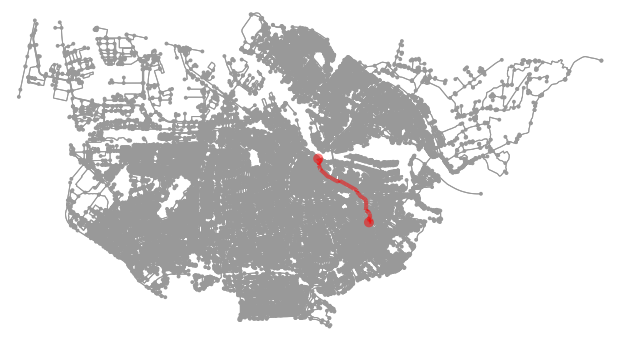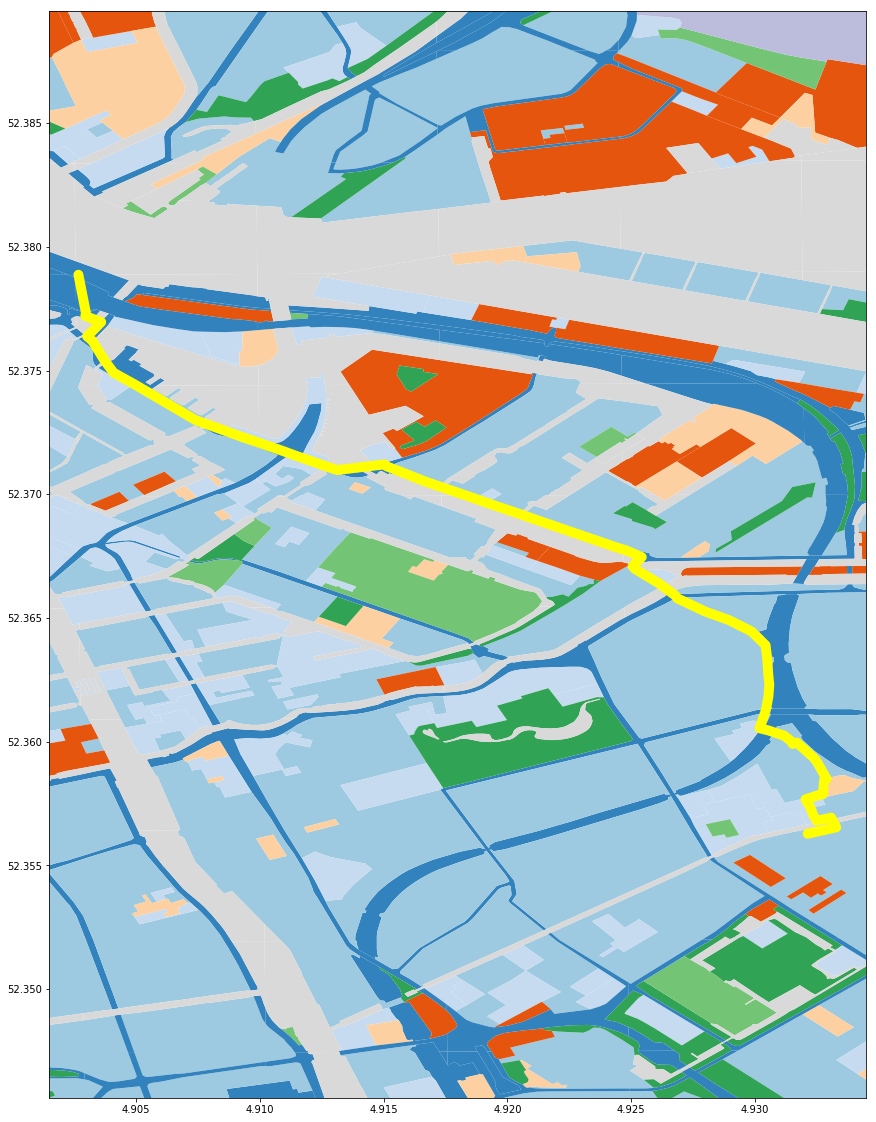When moving through cities we pass many different places and areas. Parks, shopping malls, residential areas. Ever wondered how this relates to your daily commute? I was. So with help of geopandas and Osmnx I tried to firgue this out.
Now the place where I do most of my moving around is Amsterdam. With my bike as my vehicle of choice.
Luckily for me, OSMnx (a python module made by Geoff Boeing) lets you download street network data. Although this is not always fully updated, for this exercise right here it does the trick.




